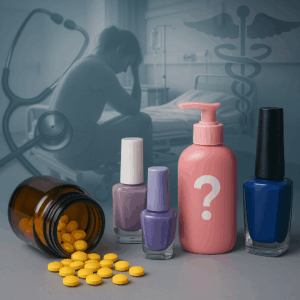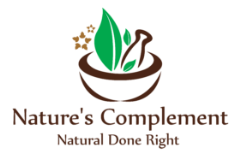
You might be paying more than you think — with your health.
Recent lawsuits against companies like Johnson & Johnson and Avon for asbestos-contaminated talc are a grim reminder that what we use in the name of beauty can carry devastating consequences. Billions have been paid out to victims, and yet most people remain unaware — or worse, indifferent — to what’s in the products they use every single day.
In July 2024, a Chicago jury awarded $24.4 million to the family of a janitor who developed mesothelioma after working in an Avon facility1. Not long before that, Johnson & Johnson proposed a $6.5 billion settlement to resolve over 60,000 cancer lawsuits tied to its talc-based products2. You’d think this would lead to industry-wide reform — but it hasn’t. These cases get buried in legal filings and payouts while the rest of the industry quietly carries on.
We still slather our skin with creams containing unpronounceable ingredients. We wash our hair with chemicals that strip it bare, only to follow up with conditioners to “fix” what we just damaged. We swipe on lipsticks — many of which still test positive for lead — then unknowingly ingest that lead with every sip, bite, or kiss.
The Cost That Doesn’t Come With a Price Tag
Does makeup cause cancer? Can fragrances trigger migraines? Do artificial nails, polishes, and hair dyes have lasting consequences on our endocrine or immune systems? The science is starting to suggest yes — and it’s a heavy price to pay for what’s packaged as beauty.
Even when research reveals dangers, nothing happens unless the public pushes. When J&J was exposed, Avon didn’t voluntarily remove talc from its products. It took a lawsuit. And only after a $24 million verdict did that product finally disappear from shelves. This is the cycle: harm, denial, lawsuits, payout, and repeat.
It’s a classic “Whac-A-Mole” problem—every time one harmful ingredient is banned or called out, another questionable one pops up to replace it. Instead of playing this endless game, companies should prioritize making truly healthy products from the start.
Personal Battles and Industry Resistance
I’ve tried to offer cleaner alternatives. I’ve been mocked for “being afraid of shampoo.” I’ve been accused of spreading pseudoscience or ruining “the good things in life.” I’ve had social media accounts swarmed by trolls, some of whom I suspect were paid to silence criticism. But I’ve also received thanks. I’ve heard from countless people suffering from skin issues, unexplained rashes, chronic headaches — and they found relief when they ditched conventional products. Their stories are burned into my memory. There are too many to forget now.
When Will It Be Enough?
Too often, people don’t reconsider their choices until they suffer: until the rash won’t go away, the migraines won’t stop, or their diagnosis leaves them speechless. By then, the damage is already done. Radiation therapy doesn’t care how flawless your foundation was. Your hair care routine won’t matter when your hair is falling out from chemotherapy.
There are no long-term studies showing what happens when we use dozens of these synthetic ingredients every day for decades. Many of the so-called “safe” ingredients are replaced with newer, often untested chemicals once they fall out of favor. Consumers become guinea pigs — participating in an undocumented experiment with no informed consent.
And Still…
Talc, a mineral formed through a geological process involving magnesian minerals and carbon dioxide, somehow holds GRAS status (“Generally Recognized As Safe”) and is used in food. Yet, it’s also contaminated with asbestos — a known carcinogen — in numerous consumer products3. How can this contradiction exist in a regulated market?
What We’re Really Paying
The cost of beauty breaks down into three painful categories:
- You pay at the register for the illusion of improvement.
- You pay with your health as the ingredients quietly accumulate in your body.
- You pay again in court — with time, trauma, and legal fees — if and when you realize the truth too late.
Even when companies lose in court, the victory is hollow. The people harmed don’t get their lives back. The damage is permanent. And yet the next version of the same product remains on the shelf with a different label, a tweaked ingredient list, and the same risks lurking inside.
What You Can Do
We can’t change the past — but we can shape what comes next.
- Read labels. If there is no ingredients list, or ingredients are unlcear, walk away.
- Contact manufacturers. Ask what’s in their products, where it’s sourced, and how it’s tested.
- Support independent testing. Ask for results. Demand proof.
- Refuse the narrative that beauty requires risk. It doesn’t.
At Nature’s Complement
We don’t believe in “pretty poison.” Every ingredient is listed. If our products are colored, it’s from real, natural sources — not synthetic dyes or industrial byproducts. We don’t hide behind trade secrets. We don’t ask you to trade health for vanity.
And we hope you’ll help spread the message: Beauty shouldn’t come at this cost. Let’s change the culture — one conscious choice at a time.
References
- “Jury Awards $24.4M in Talc Case Against Avon,” Asbestos.com, Aug 2024.
https://www.asbestos.com/… - “J&J has enough support from claimants for $6.5B talc settlement,” Reuters, Aug 2024.
https://www.reuters.com/… - “Talc,” Wikipedia.
https://en.wikipedia.org/wiki/Talc
Nature's Complement is a participant in the Amazon Services LLC Associates Program, an affiliate advertising program. If you purchase products on Amazon through any of our affiliate links, we get a small percentage of the transaction, at no extra cost to you. We spend a lot of time writing the articles on this site, and all this information is provided free of charge. When you use our affiliate links, you support the writing you enjoy without necessarily buying our products. (However we would appreciate if you would do that too!) Thank you for helping to support our work, however you choose to do so.
These statements have not been evaluated by the Food and Drug Administration. This information and/or products are not intended to diagnose, treat, cure or prevent any disease.


